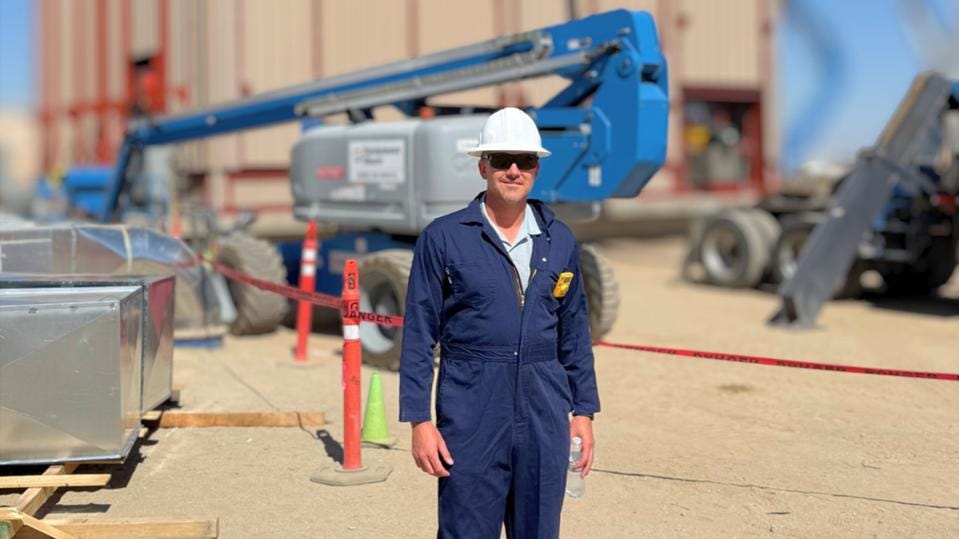Project Developers Are Bullish On The Thermal Energy Storage Market
The emergence of thermal energy storage project developers affirms our expectations for growth in the TES industry. The main driver for manufacturers is cost savings.

Project developers—specialist matchmakers who introduce cutting-edge technological solutions to prospective industrial users, create analyses to explain the costs and benefits of implementation, and help arrange project financing—are the unsung heroes on the forefront of any new industrial technology. Knowing the importance of project developers in bootstrapping new industries, I was pleasantly surprised to find one specializing in thermal energy storage.
I have often witnessed in my consulting work the vital role played by project developers in building sophisticated economic ecosystems for such diverse fields as carbon capture and storage and wind and solar farm construction.
The emergence of a developer specializing in TES is a good sign, as it indicates that the economic benefits of storing energy as heat are sufficiently compelling to attract smart intermediaries into the TES space.
I spoke with Ted Kniesche, the CEO and co-founder of South Carolina-based TES project developer startup Zero Industrial, about his company’s role in bootstrapping a new technology and what he is seeing in the TES market right now.
He started by telling me that if an industrial consumer of heat is located in a region with abundant renewable energy resources, it is a sure bet that at certain times of day, electrons are in such abundance that electricity is nearly free.
So much solar energy is generated during midday in sunny California, for example, that electricity prices sometimes turn negative and renewable generation plants are asked not to send energy to the grid. This process is termed “curtailment” in the parlance of grid operators.
If these low- or zero-cost electrons can be converted into heat for later industrial use, manufacturers stand to save a lot of money on fuel. Reduced fuel cost was one main driver in PepsiCo’s decision to use Kraftblock’s batteries in its snack foods plants in the Netherlands, scheduled to go live in just a few weeks.
Zero Industrial identifies markets which offer such energy arbitrage opportunities by analyzing inputs such as facility locations, electricity pricing, available incentives, substation capacities and nearby process heat users that could benefit from TES.
Many operating managers are too focused on day-to-day concerns to keep up with engineering innovations outside their field, so project developers walk clients through a cost-benefit analysis of implementing a new technology.
Kniesche and his team meet with a prospective customer’s management to explain how TES systems operate. Depending on the manufacturer’s interest after reviewing the initial technical and economic analysis, Kniesche and his team then conduct detailed engineering studies, pull building permits, and help arrange project financing.
Kniesche believes that cost reduction, rather than decarbonization, is the primary driver for TES adoption in the North American market. He points out that while most industrial customers are not regulated to reduce CO2, all customers want to cut costs. Another selling point is the reduction of combustion emissions (e.g., nitrogen and sulfur oxides and small particulate matter) that often burden industrial operations in dense urban settings.
I asked Kniesche how recent changes in the regulatory environment have affected the TES market. He told me that some of the rules passed to placate manufacturers after the virtual repeal of the Inflation Reduction Act have been extraordinarily positive for TES projects. In addition to maintaining investment and manufacturing tax credits, the Trump administration’s recent regulation changes have reinstated 100% first-year depreciation—allowing companies to access tax equity financing for capital projects. Tax equity financing is one of the drivers that led to the boom in renewable energy installations, so it isn’t a stretch to imagine it will benefit the TES market as well.
Kniesche and his team’s emergence in this space has reaffirmed my recent interest in thermal energy storage by confirming the wealth of opportunities that exist to use TES to improve industrial efficiency while reducing carbon emissions. Intelligent investors take note.


